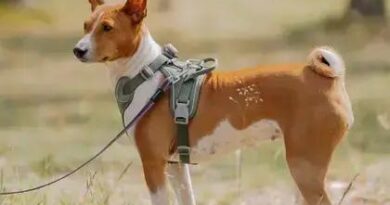What is incorporating play into training
Understanding the Concept of Play in Dog Training
Incorporating play into training is a revolutionary approach that enhances the learning experience for dogs. This method recognizes that dogs, much like humans, learn best when they are engaged and having fun. By integrating play into training sessions, owners can create a positive environment that encourages dogs to participate actively, making the learning process more enjoyable and effective. This approach not only fosters a stronger bond between the dog and the owner but also promotes better retention of commands and behaviors.
The Benefits of Play in Dog Training
One of the primary benefits of incorporating play into training is the increased motivation it provides for dogs. When training sessions include elements of play, dogs are more likely to stay focused and eager to learn. This heightened motivation can lead to quicker mastery of commands and tricks, as dogs associate training with fun rather than a chore. Additionally, play can serve as a reward system, reinforcing positive behaviors and encouraging dogs to repeat desired actions.
Types of Play to Incorporate in Training
There are various types of play that can be effectively integrated into dog training. Interactive games, such as fetch or tug-of-war, can be used to teach commands like “come” or “drop it.” These activities not only make training more enjoyable but also help to develop a dog’s physical skills and coordination. Furthermore, using toys that stimulate a dog’s natural instincts, such as squeaky toys or puzzle feeders, can enhance cognitive engagement during training sessions.
Creating a Structured Play Training Session
To effectively incorporate play into training, it is essential to create a structured session that balances playtime with learning. Start with a warm-up that includes a short play session to get the dog excited and engaged. Follow this with focused training on specific commands or behaviors, interspersed with brief play breaks. This structure helps maintain the dog’s interest and energy levels, ensuring that they remain attentive throughout the training process.
Recognizing Your Dog’s Play Style
Every dog has a unique play style, and understanding this can significantly enhance the training experience. Some dogs may prefer high-energy games, while others might enjoy more subdued activities. By recognizing and catering to your dog’s individual preferences, you can tailor training sessions that are both enjoyable and effective. This personalized approach not only keeps the dog engaged but also fosters a deeper connection between the dog and the owner.
Using Positive Reinforcement with Play
Incorporating play into training is most effective when combined with positive reinforcement techniques. Rewarding dogs with playtime for successfully completing a command or task reinforces their learning and encourages them to repeat the behavior. This method creates a positive feedback loop, where dogs associate training with rewards, making them more likely to engage in future training sessions with enthusiasm.
Monitoring Your Dog’s Energy Levels
While play is an essential component of training, it is crucial to monitor your dog’s energy levels to prevent overstimulation or fatigue. Dogs can become overly excited during play, which may lead to difficulty focusing on training tasks. By observing your dog’s behavior and adjusting the intensity of play accordingly, you can maintain a balanced training session that maximizes learning while ensuring the dog’s well-being.
Incorporating Social Play with Other Dogs
Social play with other dogs can also be a valuable addition to training. Allowing your dog to interact with peers during training sessions can enhance their social skills and provide opportunities for learning through observation. This type of play can teach dogs important behaviors, such as appropriate play etiquette and communication skills, which are essential for their overall development and well-being.
Adapting Training Techniques for Different Breeds
Different dog breeds may respond uniquely to play-based training techniques. For instance, high-energy breeds may thrive with more vigorous play, while calmer breeds might benefit from gentler activities. Understanding the specific needs and characteristics of your dog’s breed can help you adapt your training methods to ensure they are both effective and enjoyable. This tailored approach can lead to better training outcomes and a more fulfilling experience for both the dog and the owner.
Conclusion: The Future of Dog Training
Incorporating play into training represents a shift towards more humane and effective training methods. As more dog owners recognize the benefits of this approach, the landscape of dog training continues to evolve. By embracing play as a fundamental component of training, we can create happier, healthier, and more well-adjusted dogs, ultimately enriching the bond between dogs and their owners.



